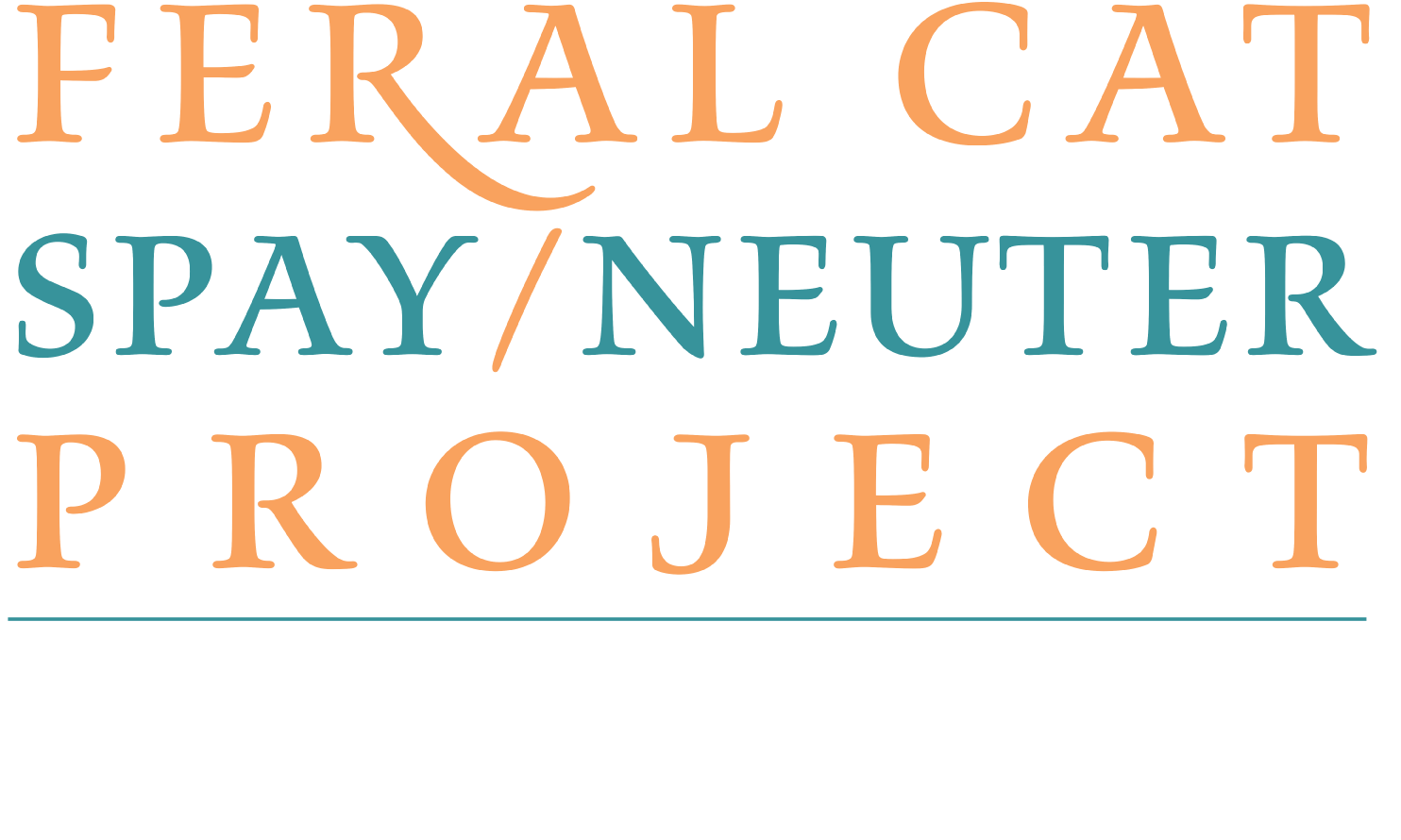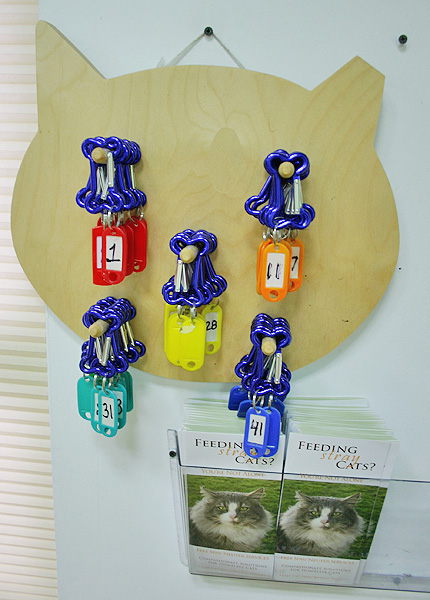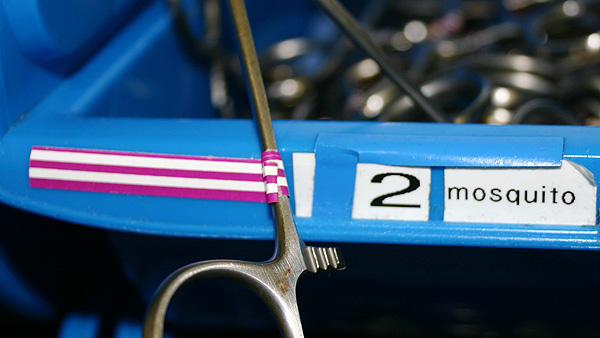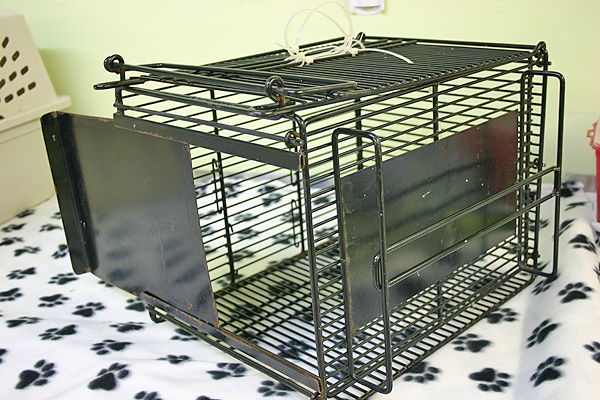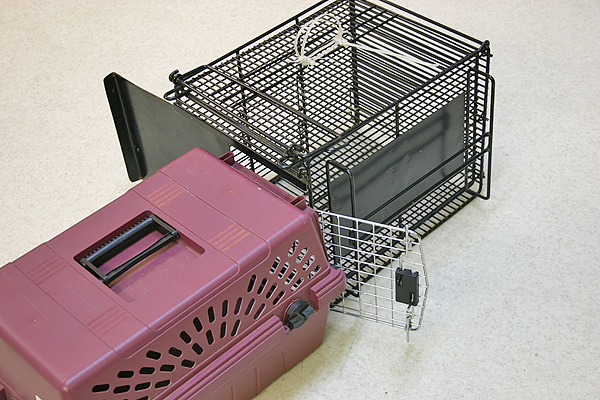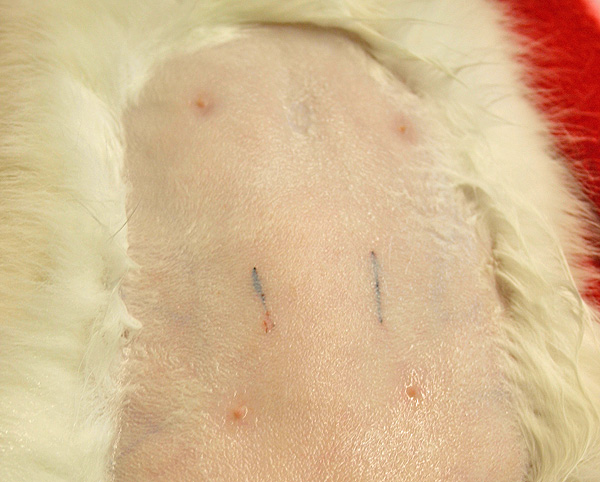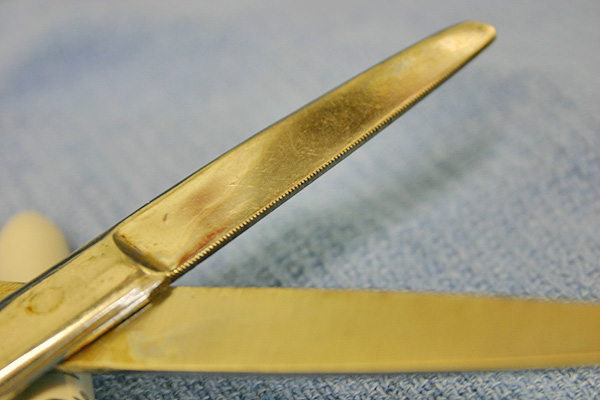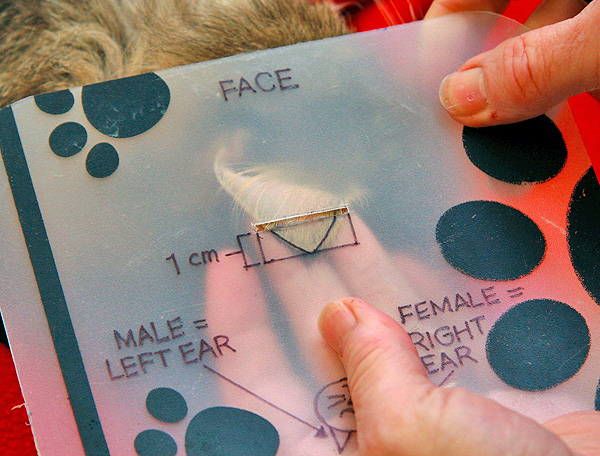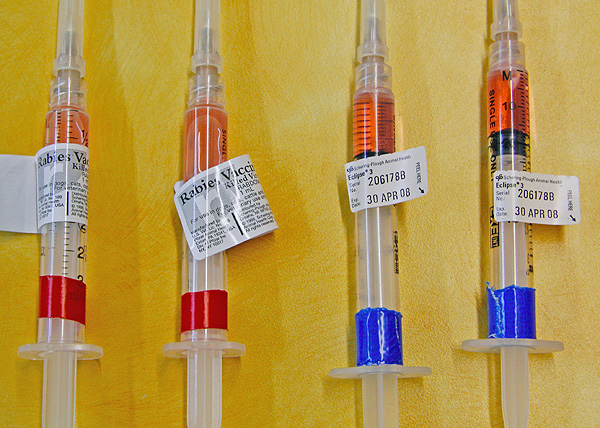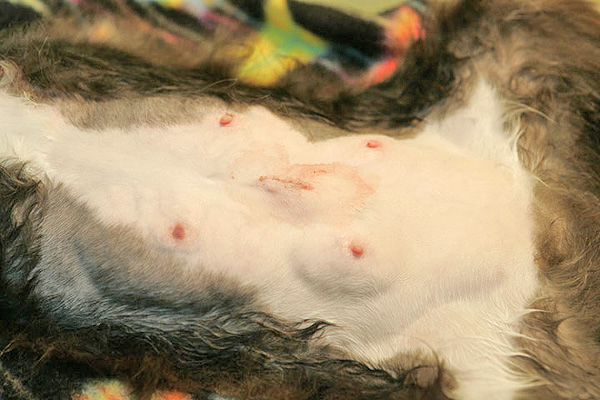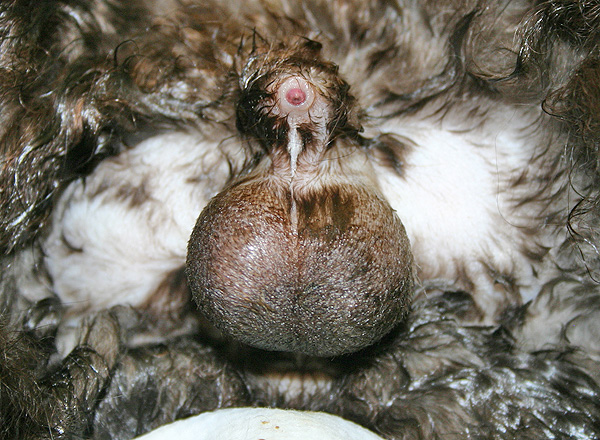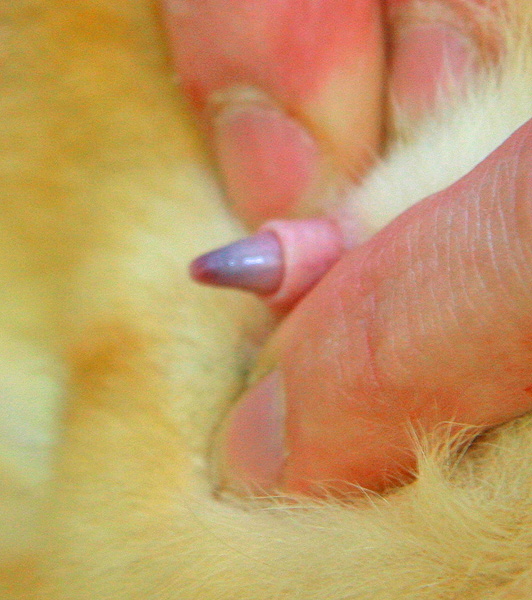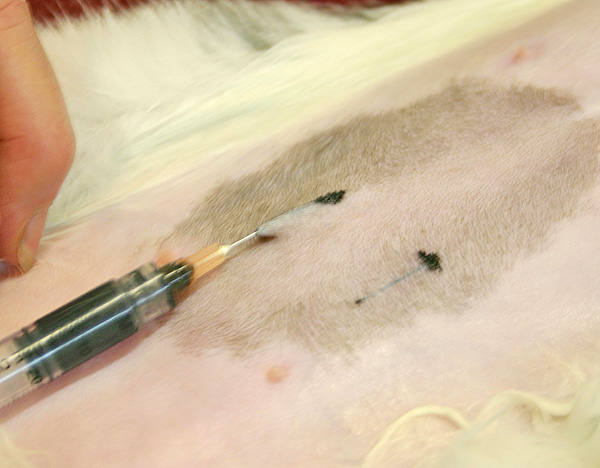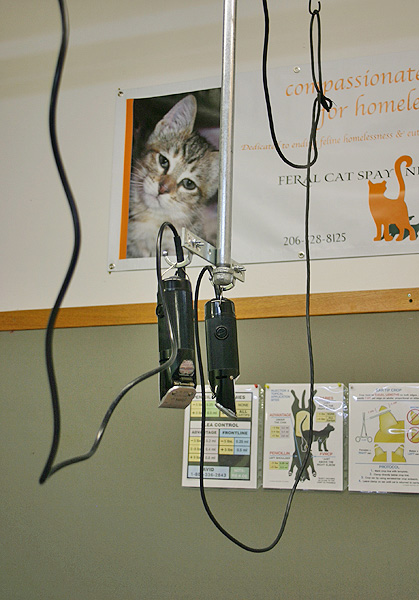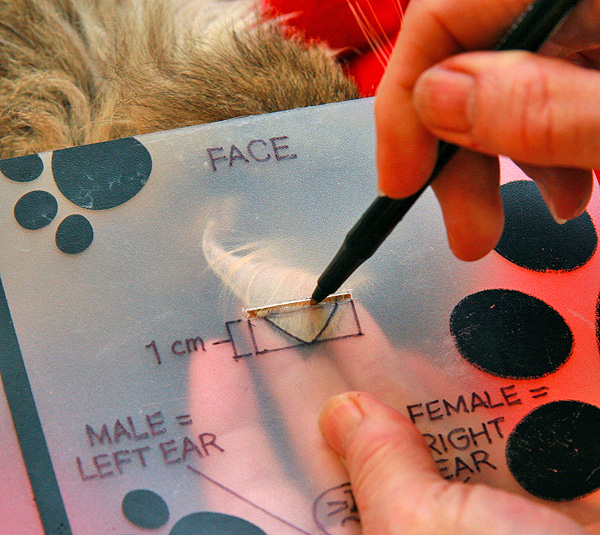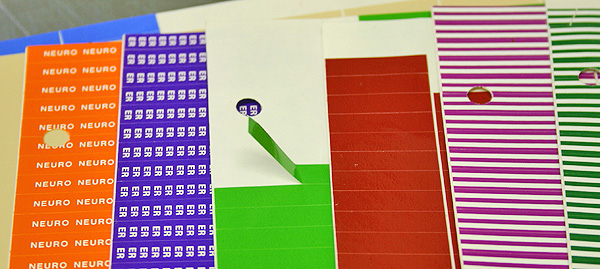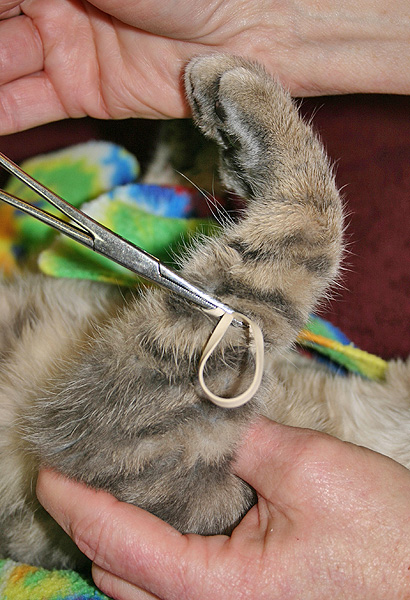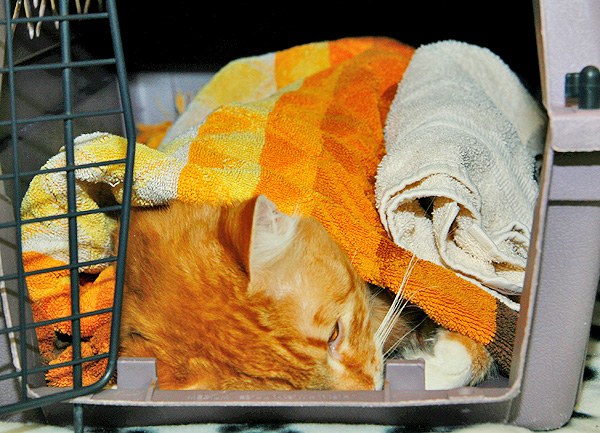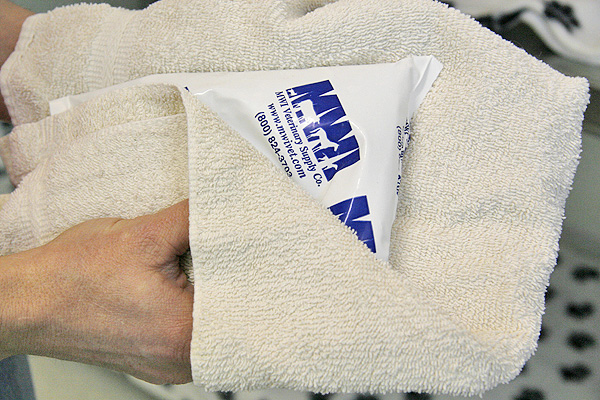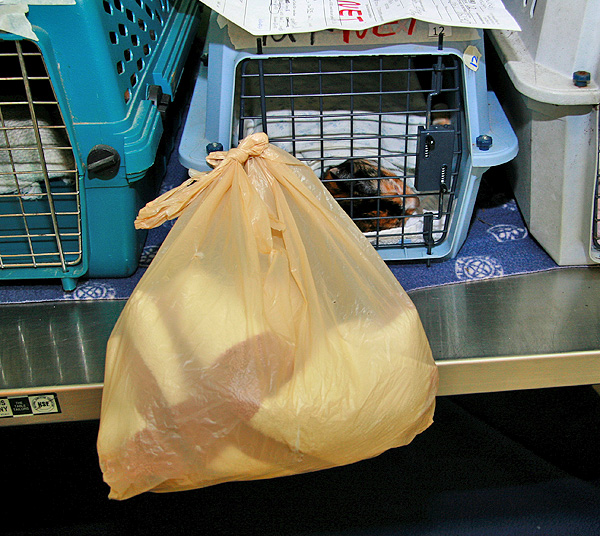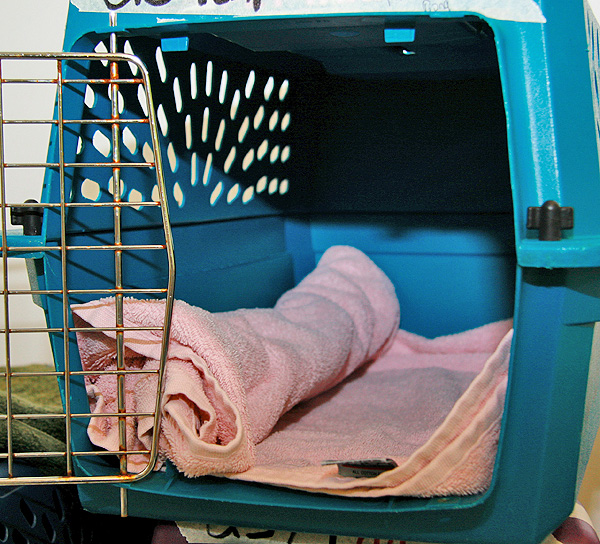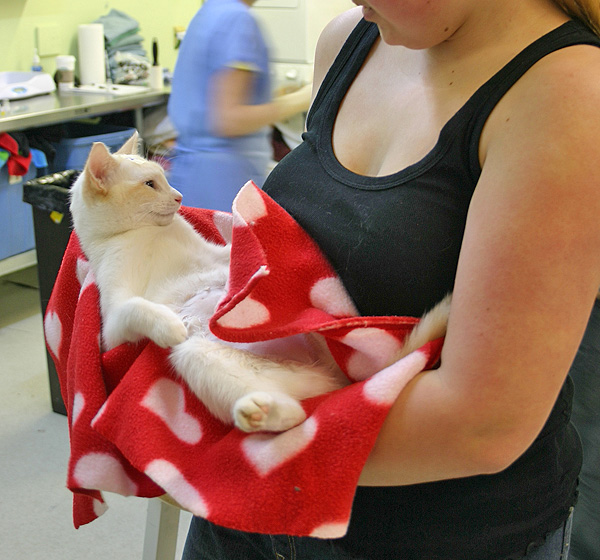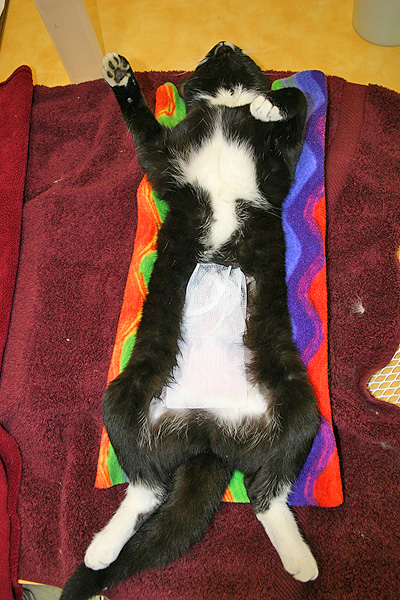Clinic Procedures
Overview
INSTRUCTIONS BY STATION
Efficiency is critical to running a successful clinic. The recommended procedures offered here are the result of our learned experience, and the experiences of other like organizations. They represent a foundation for establishing an efficient, cost effective, high volume, high quality spay/neuter clinic.
Reservations
TYPES OF CLINCS
We have two types of clinic: Private and Public. Review the differences between these clinics.
Read More
Using Public & Private Clinics
PRIVATE CLINICS
Reservations for Private Clinics are simple. The hosting organization reserves fifty surgery spaces on one clinic day with us, then the Host is responsible for who brings what cats from where. We set a limit of 25 females, if gender is known and accept 27 or 28 females, if all are kittens. If all are free-roaming cats, we expect 55- 60% female, which is typical for our clinic.
PUBLIC CLINICS
Reservations for Public Clinics are a bit more complicated. We accept free-roaming cats to be ear tipped along with tame or adoptable cats that are not to be ear tipped. This mix results in less uncertainty about no-shows, overbooking and gender distribution. We average about 50:50 of no ear tip (NET) to ear tip (ET) surgeries in Public Clinics.
Read More
Check-In
A couple of our procedures for Check-in are unique from other programs. We increase our efficiency through small improvements in our processes.
ID# TAGS
To identify each trap/carrier at Check-in, we use carabiner clips with key tags attached by rings. See photo. With permanent black marker, we write consecutive ID numbers on the key tags. A color code system provides us with a visual cue for cat order. Red tags are #1-10; Orange tags are #11-20; Yellow are #21-30; Green are #31-40; Blue are #41-50.
Why We Do it This Way
1. Why do we use a carabiner tag, if we already have the ID number on the preprinted label?
Using sticky ID number labels along with carabiner tags increases our efficiency. The stickers are used to quickly assign ID number to the cat’s container and the Medical Record. The carabineer tag is a visual sign for the anesthetist. We simply look for any trap or carrier with a carabineer tag attached to know how many and which cats await anesthesia. When there is no tag, we know who requires monitoring.
PREPRINTED ID# LABELS
We use adhesive labels (Avery #9167 or equivalent) for preprinted ID# labels. See photo. Two copies of the number are on each label, and we print #1-50 for each clinic. We apply one number (half the label) to the Medical Record and one to the carrier or trap where the cat will return after surgery.
Why We Do it This Way
1. Why do we use preprinted labels that are difficult to remove instead of handwritten numbers on masking tape?
We began using preprinted stickers for several reasons: to save time and to eliminate mistakes reading ID numbers. Poorly written handwritten ID numbers can be misread causing mix-ups of cats and carriers during the clinic.
The labels that we use are very sticky, so that they adhere well. Some brands of labels fall off easily leaving carriers and traps unidentified. At first, some caretakers complained that the stickers were hard to remove, but we reminded them of the importance of proper ID.
Another benefit to preprinted labels is to prevent accidentally duplicating or skipping ID numbers during a cat. This occurred occasionally when we used masking tape and handwritten numbers. Duplication of a number could lead to cats being switched and getting returned to the wrong caretaker. Omission of a number leads to serious distraction and disruption of clinic flow while we figure out whether a cat has accidentally been skipped or if the number was never assigned. Preprinting labels avoids these problems.
Anesthesia
CONTROLLED DRUG RECORD KEEPING
Controlled drug record keeping must be current and accurate, but it does not have to be complicated nor time-consuming. We designed a protocol that makes tracking controlled drugs a logical, simple process. Details are provided in three sections: Receipt; Usage; Reconciliation.
Read More
Logging Receipt of Controlled Drugs
Recording Usage of Each Drug
End of Clinic, Drug Reconciliation
TIPS FOR ESTIMATING BODY WEIGHT
Estimating body weight is a valuable tool for whoever administers anesthesia. More accurate dosing means increased safety for the cats and reduced waste on your finances.
Read More
Tips for Estimating Body Weight
ANESTHESIA DOSE CHART
We began dosing cats using a simple 0.02 ml of TKX per pound. Over time, dosing evolved to a sliding scale. Our target is a light plane of anesthesia, because we add isoflurane for a surgical anesthetic plane. For programs that require 1-2 hours of surgical anesthesia with no access to isoflurane, our chart may not be appropriate.
Read More
TECHNIQUES FOR ANESTHETIC INJECTION
The greatest challenge of anesthesia is getting the injection into the cat without human or cat getting stressed or hurt. We have developed a variety of methods that a single individual can successfully inject cats. The goal is to minimize stress to the cat by being quick and accurate while minimizing risk to the anesthetist and the cat. Don’t reinvent the wheel. Learn from our experience. See photos and videos, too.
Read More
Techniques for Anesthetic Injection
Why We Do it This Way
1. Why don’t we use an injection pole?
Injection poles are available sized for the small dose of anesthesia that we use, so we tried one. However, we found the pole to cumbersome to draw up anesthetic, because the pole is the plunger of the syringe. We decided that it provided no benefit over other techniques that we currently employ.
PREPARING ANESTHESIA MASKS
If a more secure seal is desired around the anesthesia masks, we cut up exam gloves to fashion an additional diaphragm. See how we do it and what cautions to take.
Read More
F AIR CANISTERS
We use F Air canisters to capture escape gas for the prep table isoflurane machine. We weigh each new canister prior to use and write the date/weight directly on the canister. Each morning we weigh it before the clinic starts. When the canister gains two ounces, we discard it and start a new one.
MAINTAINING OXYGEN STORES
By having a two-tank system, we never run out of oxygen and can get deliveries on a regularly scheduled day. Read what our system is and why we like it
Read More
ISOFLURANE MACHINE CARE
Their lives depend on it, so take care of it. The isoflurane machines are expensive and should be treated with care.
Read More
GAS VAK SYSTEM
Our anesthetic exhaust system, GasVak, is an adjustable vacuum system that pulls air through the non-rebreathing system away from the cat. The exhaust empties into a duct so that all waste gases exit the building. GasVak is turned on from the start surgeries until day’s end.
ANESTHETIC BAGS AND TUBING
At the end of each day, all anesthesia tubing is rinsed with dilute chlorhexidine and hung to dry overnight. Besides providing some disinfection, rinsing off the anesthetic residue prolongs the life of the rubber.
Surgery Prep
FELV TESTING
The results of a feline leukemia virus test may literally mean the difference between life and death. The procedures for testing should be followed carefully and accurately. Improve your results and efficiency .
Read More
GENDER DETERMINATION
Although this seems simple, we are dealing with more than just “male” and “female”. Correctly identifying a neutered male compared to a cryptorchid male means the difference between releasing a fertile cat, or spending an hour in surgery on a neutered cat. We developed an algorithm to make this simpler.
Read More
EAR TIP
Recognizing an ear tip spares cats from being transported, held, brought to the clinic, sedated, explored, transported and held even longer. Performing a sufficiently sized ear tip in good position is mandatory for anyone offering spay/neuter of free-roaming cats. It’s so easy and quick, there is really no excuse not to ear tip. We developed a great protocol for consistent ear tips.
Read More
The Perfect Ear Tip
The Perfect Ear Tip Template
Why We Do it This Way
1. Why do we avoid using a sharp blade or scissors for ear tips?
Any cut from a sharp blade bleeds more than a cut from a dull blade. This is a basic principle of tissue and surgery. A vessel severed by trauma or a dull instrument experiences more microscopic damage to its tissue. The damage is beneficial, because it stimulates contraction of the vessel walls and releases chemicals that activate clotting. Because the vessel constricts, blood loss is reduced and clotting is accelerated.
New sharp, scalpel blades are preferable in typical surgery, because we are trying to minimize tissue trauma. For ear tips, we prefer the ear cropping scissor that is designed to minimize bleeding and facilitate healing.
2. Why don’t we use any cautery, gauze or styptic powder on the ear tips?
Our protocol incorporates several steps to improve clotting after the ear tip. We perform the ear tip early in the prep process and leave on the clamp until the cat is ready to return to its carrier. We rarely have any bleeding problems by simply doing those two things.
We used to use gauze sponges attached to the ear with a paperclip. Most cats spent lots of time flicking their ear or scratching at their head to get rid of the gauze and clip, which seemed to worsen the bleeding rather than minimize it. We had one report of a cat released with a gauze/paper clip that was seen three months later still wearing it.
For several years, we used battery-operated cautery after ear tipping. We found that most volunteers focused so intently on cauterizing the ear that they completely forgot to monitor the cat. Furthermore, the time spent cauterizing the ear increased the time needed for anesthesia. All in all, we saw no benefit to portable cautery.
In an effort to simplify the workload and minimize procedures for the cat's sake, we adhere to our current protocol.
TATTOO
An abdominal scar is not a spay scar. We have seen pregnant and in heat cats with such scars. However, a tattoo near the spay incision is confirmation of being spayed. It spares her the unneeded exploratory surgery and saves the clinic time and money. Not all tattoo techniques and supplies are the same. Check out our techniques.
Read More
Why We Do it This Way
1. Why do we tattoo the abdomen and not the ear?
Many people examining a free-roaming cat would not notice a tattoo inside the ear. We know of cases in which veterinarians found ear tattoos and did not know what they indicated. To avoid any risk of a spayed cat being explored to find out if she is spayed, we prefer the tattoo next to where the spay incision would be made. Most people - but not all - know where to shave to check for an abdominal scar. A tattoo in that location insures that someone will see it before unnecessarily opening up a cat's abdomen.
2. Why do we tattoo female cats, if we do not ear tip them?
We see many cats with midline scars. When we first started our clinics in 1997, we found a female cat with an obvious scar consistent with a spay scar, yet she was pregnant. An abdominal scar merely means that the cat might have had an abdominal surgery, or it might have been scratched and received what looks like an abdominal surgery scar. There is never any guarantee that a scar means that the cat was previously spayed. Kittens that are spayed young rarely have a visible scar, thus, no one would be able to tell if they would had previous surgery.
When we ear tip or tattoo a cat, we are veritably signing our name guaranteeing that the cat is altered. The only way to know for certain is to explore the cat, unless it has a tattoo. The tattoo eliminates any question about an abdominal scar. The tattoo clearly identifies the cat as spayed, in case she ever becomes homeless and her reproductive status is unknown. An abdominal tattoo spares the cat unnecessary surgery in the future and saves precious resources and time for spay/neuter clinics. We urge all veterinarians and organizations to tattoo all spays that they perform.
FVRCP VACCINATION
At our clinic, vaccinating with FVRCP is an option available to caretakers. Not all vaccines are the same, nor is each administration technique equally safe. And some argue that one vaccine offers no benefit. Find out why this is not true plus learn valuable safety tips.
Read More
FVRCP Vaccinations
Injection Site/Dose Diagram
Why We Do it This Way
1. Does one FVRCP vaccine do any good?
There are two basic types of FVRCP vaccines: killed virus (KV) and modified live virus (MLV). To get immunity from killed virus vaccines, at least two doses are required. KV vaccines prime the immune system for creating protective immunity after a subsequent booster. The first dose shows the body the enemy and a second dose generates protective immunity. Paired doses are required 3-5 weeks apart. Using killed virus vaccines for free-roaming cats is clearly undesirable, because giving boosters is impractical.
On the other hand, MLV vaccines begin stimulating immunity on the first day of administration. The vaccine contains viruses that replicate in the cat's body but do not cause disease. A booster 3-4 weeks later is not required nor recommended in cats over 14 weeks of age. Another benefit of MLV vaccines is that vaccinated cats can shed vaccine virus particles in their feces, which cause no harm and can stimulate immunity in other cats/kittens that come into contact with the feces.
Kittens under 14 weeks of age have varying levels of immunity from antibodies passed from their mother. Early in kittenhood, antibody levels are highest. As the weeks pass, antibodies gradually decline. For several weeks, antibody levels drop too low to protect the kitten while antibodies remain too high to let the vaccine work. The antibodies "fight off" the vaccine. Known as the "critical period" or "vulnerable period" between 6-12 weeks, this stage of uncertainty is why tame kittens are vaccinated every 3-4 weeks until after 14 weeks of age. Vaccines given at the earliest point where the body can respond will hopefully shorten the period that the kittens are vulnerable to diseases. By 14 weeks of age, the mother's antibodies wear off enough to allow the vaccine to work. Therefore, any normal kitten over 14 weeks can receive one MLV vaccine and not need a booster - feral or tame.
In short, yes, one FVRCP modified live virus vaccine administered to a cat over 14 weeks of age is indisputably beneficial to that individual and perhaps to other cats in its territory. There is evidence indicating that one vaccine administration may provide lifelong immunity against panleukopenia.
2. Why do we administer vaccines low on the leg instead of over the neck?
We treat the free-roaming cats with the same medical standards that we treat our own housecats. The American Association of Feline Practitioners recommends that all feline vaccines should be administered low on the cat's leg and administered in separate locations, because vaccine-induced tumors are a well-known potential adverse effect of vaccine administration. If a tumor were to develop at a vaccination site low on a leg, then there is potential for complete removal and cure by removing the leg.
When vaccinated over the shoulders, formerly the most common practice, tumors cannot be completely removed. Since feral-behaving cats have the potential to become tame under certain circumstances, it is possible that some of the free-roaming cats could become pets and thus, receive treatment if vaccine-induced tumors developed at some point in their future. Injecting a vaccine low on the leg is no more difficult or time-consuming than injecting it over the neck.
Cost Saving Tips
1. Promotions for Medical Supplies: Stock up!
The MWI website attaches promotions notification to their products. By periodically reviewing our regular supplies, we identify when promotions are in effect on the products that we normally use. Their website allows us to make a template of all the products that we order making it easier to find when promotions go into effect. The website also shows similar items to what we normally order so that we can see if a cheaper price is available on an item that could substitute for what we usually use.
2. Reusing Syringes
We reuse syringes for vaccines in order to reduce consumption and waste. The rabies syringes are only used for rabies vaccine and are labeled with red tape on the syringe barrel. If there is ever any contamination of the syringe, such as with blood or if a volunteer draws up the wrong vaccine (Rabies), then we discard the syringe and get a new one. We always use a new needle for each cat and remove the needle immediately following administration.
3. Exchange Expiring Products
Monitor the expiration date of vaccines and tests. If products come close to expiration, ask the supplier to exchange for more current stock.
RABIES VACCINATION
Although Washington State is not endemic for rabies, the true incidence of rabies in our state is unknown. All free-roaming cats over four pounds are vaccinated with a high quality rabies vaccine at no cost. For details on vaccine selection and money-saving tips, read more.
Read More
Rabies Vaccination
Injection Site/Dose Chart Diagram
Why We Do it This Way
1. Why do cats need to be four pounds to receive a rabies vaccine?
Manufacturers of rabies vaccines advise administering the vaccine after three months of age. The purpose of waiting three months is to avoid maternal antibodies against rabies. Maternal antibodies are passed from the mother to the kittens to protect them from diseases early in kittenhood. These antibodies gradually wear off and are ineffective around 12 to 14 weeks of age. Of course, kittens from unvaccinated mothers have no rabies antibodies at all.
We use four pounds as an estimate for four months of age. Four months of age is commonly when rescuers release feral-behaving kittens instead of keeping them to socialize. Younger kittens are usually tamed, placed in homes and receive veterinary care and rabies vaccines as pet cats. Because we want all the free-roaming cats to be rabies vaccinated, we use four pounds to select the kittens most likely to be released as free-roaming cats. Admittedly, we are likely vaccinating kittens that become tame, but we would rather err on the side of caution.
2. Why do we use a three-year killed rabies vaccine?
We strive to get the longest protection against rabies, because most of the free-roaming cats do not receive rabies boosters. The three-year vaccine should produce longer immunity than the one-year vaccine. Many of the free-roaming cats are likely to be formerly owned cats that may have received rabies vaccines in their past. Using the three-year rabies vaccine in previously vaccinated cats would create at least three-years of rabies protection. Because of public health issues and the potential for rabies to infect people, we aim to increase rabies protection in the free-roaming cat population in order to protect the general public.
3. Why do we administer vaccines low on the leg instead of over the neck?
We treat the free-roaming cats with the same medical standards that we treat our own housecats. The American Association of Feline Practitioners recommends that all feline vaccines should be administered low on the cat's leg and administered in separate locations, because vaccine-induced tumors are a well-known potential adverse effect of vaccine administration. If a tumor were to develop at a vaccination site low on a leg, then there is potential for complete removal and cure by removing the leg.
When vaccinated over the shoulders, formerly the most common practice, tumors cannot be completely removed. Since feral-behaving cats have the potential to become tame under certain circumstances, it is possible that some of the free-roaming cats could become pets and thus, receive treatment if vaccine-induced tumors developed at some point in their future. Injecting a vaccine low on the leg is no more difficult or time-consuming than injecting it over the neck.
Cost Saving Tips
1. Promotions for Medical Supplies: Stock up!
The MWI website attaches promotions notification to their products. By periodically reviewing our regular supplies, we identify when promotions are in effect on the products that we normally use. Their website allows us to make a template of all the products that we order making it easier to find when promotions go into effect. The website also shows similar items to what we normally order so that we can see if a cheaper price is available on an item that could substitute for what we usually use.
2. Reusing Syringes
We reuse syringes for vaccines in order to reduce consumption and waste. The rabies syringes are only used for rabies vaccine and are labeled with red tape on the syringe barrel. If there is ever any contamination of the syringe, such as with blood or if a volunteer draws up the wrong vaccine (FVRCP), then we discard the syringe and get a new one. We always use a new needle for each cat and remove the needle immediately following administration.
3. Inexpensive Syringes
Administering vaccines does not require accurate measurement. The least expensive syringes are more than adequate for this purpose.
ANTIBIOTIC: LONG-ACTING PENICILLIN
We perform sterile surgery that does not necessitate the use of antibiotics, but we realize that some cats may have underlying infection. Because the antibiotic presents no negative side effects, we use it for the few cats that will benefit. Check out our administration tips.
Read More
Long Acting Antibiotic
Injection Site/Dose Chart Diagram
FLEA CONTROL
Flea control is an option at our clinic, i.e., we request a donation when someone requests flea control. Because the cats are on their backs during surgery, we do not apply the flea product in the usual place. Read our protocol and learn our cost saving tips.
Read More
Flea Control
Injection Site/Dose Chart diagram
Cost Saving Tips
1. Donations From Drug Company Sales Representatives.
Flea control is a big expense but an option that we provide our caretakers. We suggest a donation of $5 per dose to cover our costs. Sales reps intermittently donate packages of flea control (Frontline® and Advantage®.
SURGICAL PREP
This section is not meant to be a comprehensive teaching tool but is aimed to emphasize some of the more important aspects that are most commonly overlooked by volunteers. View photos and watch the spay prep video above. Review general principles in addition to selection of supplies and prepping for unusual procedures.
Read More
Surgical Prep Protocols
Spay Prep Diagram
Why We Do it This Way
1. Why do we use chlorhexidine scrub and solution instead of an iodine-based product?
We prefer chlorhexidine (CHX) for several reasons. The primary reason is because CHX absorbs into the upper skin layers and continues to disinfect after we are finished scrubbing. Also, CHX does not stain clothing, countertops, flooring and skin while iodine-based products can stain items brown or black. Lastly, iodine-based products can be absorbed through the skin and affect the thyroid glands of people after increased exposure to these products.
2. Why don’t we use alcohol to remove the surgical scrub?
Alcohol has no immediate disinfecting properties. Most bacteria survive exposure to alcohol, so there is no sterilizing benefit. Furthermore, because of the increased volatility of alcohol compared to chlorhexidine solution, alcohol application greatly contributes to hypothermia. (That is why veterinarians spray overheated dogs' feet with alcohol: to cool them down.) During anesthesia, we strive to keep the cats warm, so avoiding anything that would rapidly cool the cat is advised. Thus, considering the disadvantages and lack of advantages, we do not use alcohol for prep.
FLUIDS
Subcutaneous fluids are reserved for cats that are dehydrated, are compromised, are in the later stages of pregnancy or have experienced bleeding during surgery. The fluids are warmed in an incubator and then kept warm during administration by using a Thermal Sak Pressure Infusor® from the Smithworks Company - www.iv-warmer.com.
Cost Saving Tips
1. Donated Fluids and Supplies
One supporter brings leftover IV fluids from the medical office where she works. The fluids are fresh, sterile and headed for disposal. Occasionally, supporters have leftover fluids, needles, insulin syringes and/or IV administration sets when their pet dies. We put these donated items to good use and owners are comforted knowing that something positive results from their loss.
Surgery Suite
AUTOCLAVE MAINTENANCE
We follow the owner’s manual for autoclave maintenance and have it serviced once a year. Running five to six cycles per day averaging four days per week is considered heavy use. The annual service extends the life of the equipment.
Cost Saving Tips
1. Refurbished Equipment Instead of New
Depending on the anticipated usage, refurbished used equipment can be of equal performance at a much lower price. Autoclaves and anesthetic machines are expensive pieces of equipment that are less expensive when purchased as used, refurbished stock.
AUTOCLAVE OPERATION
We follow the owner’s manual for autoclave operation. When packs are wrapped tightly, we can fit 8 packs in the chamber. We run the cycle for 40 minutes at 265 degrees. We unplug the autoclave when we are done at the end of the day to protect it from power outages and surges.
SPAY PACKS
In a high volume, high quality spay clinic, keeping sterile packs ready for the surgeon is vital. Pack prep procedures must be clear, efficient and simple, while your financial investment in instruments remains protected through proper maintenance and careful handling. (See video.)
Read More
Surgical Packs from Start to Finish
Surgical Packs Diagram
Why We Do it This Way
1. Why do we use cloth wraps and drapes instead of disposable paper?
We used paper wraps for many years. In an effort to reduce garbage and save money, we reused the paper. Volunteers actually washed the blood off the paper surgery drapes, when possible. In consideration of time, hygiene and the effect on the environment, we switched to cloth drapes and wraps a few years ago. The cloth drapes are high quality and last for years, even with heavy usage. They eventually wear out from the heat in the autoclave, but overall, we reduced labor, time and expense in addition to lowering our impact on the environment by switching from paper to cloth.
Cost Saving Tips
1. Inexpensive Surgical Instruments
For some procedures, such as routine neuters and ear tips, inexpensive or free instruments are all you need. High quality, German instruments are needed in spay packs, but are a waste of money for neuters and ear tips. (See Clinic Equipment & Supplies List)
LAUNDRY
We all love fresh-smelling laundry, but surgical instruments can be damaged by your laundry products. Find out how we minimize our laundry and protect our valuable instruments.
Read More
SECURING THE MASK
Three regular sized rubber bands, linked end-to-end, provides enough length for the largest tomcat head. We loop one end around the stalk of the mask, wrap the strand around the cat’s head and then slip the other end loop around the stalk of the mask. For smaller cats, we use the second rubber band as the end. Quick, easy and not obstructive for viewing the cat’s face during anesthesia.
DECLAW
Before beginning a declaw, the tech applies a tight rubber band secured with a clamp for a tourniquet on the leg above the carpus, not above the elbow. See photo. The surgeon wears sterile gloves and disarticulates the toe using sterile technique and a surgical blade. The incision is closed with either glue and/or absorbable suture. We apply a pressure to the site for a few minutes and then remove the tourniquet.
TAIL AMPUTATIONS
For free-roaming cats and pet cats, tail amputations are not uncommon.
Read More
DISPOSAL OF TISSUES
Laws govern the disposition of biological tissues. Each region may vary. We collect all tissues in a plastic bag in surgery. At the end of the day, the bag is sealed and placed in our freezer. We use a professional disposal service that picks up our tissues as needed.
Post Op
PREPARING CARRIERS/TRAPS
The dirtiest job in the clinic may be one of the most important. Provide warmth and comfort, but prevent disease transmission and minimize your workload.
Read More
Why We Do it This Way
1. Why don’t we keep all the bedding and wash it?
We request for people to bring clean bedding for each cat. If it is not needed, then we send it home with the cat. If we were to keep all the dirty bedding that comes in with cats, we would have several more loads of laundry to wash each day. To save our time and money, we have the caretakers wash their own laundry. Some ask that we throw away their dirty laundry, but even that costs us money, because we pay for trash pick up. Disposing of dirty laundry instead of washing and reusing is also wasteful and bad for the environment. So we do not make exceptions: the only laundry that we wash is our own and dirty laundry is returned to its owner.
2. Why don’t we tie the bag to the top of the carrier?
If we tie the laundry bags to the top of the carriers, then we cannot stack the carriers on top of each other. We want each cat to be returned with its own laundry, so we simply tie the bag to the carrier door.
3. Why don’t we use bleach to clean the carriers and traps?
We do not use bleach for cleaning carriers, and many people ask why. Using bleach on the cat’s own carrier is unnecessary. If a cat comes out of a carrier and goes back into the same carrier, then the cat is not being exposed to anything foreign. We simply do not need to sterilize the carrier. People are not placed in sterile beds after surgery, so cats do not need sterile bedding after surgery either.
Aside from lack of need, bleach is very irritating to skin. If cats come in contact with bleach, they can receive chemical burns, such as cracked paw pads. Bleach also damages the carriers and traps, if not rinsed off. Additionally, bleach pollutes the indoor air in enclosed spaces/ rooms. Fumes in the air are very irritating to cats and people. Instead of bleach, dilute chlorhexidine (CHX) solution is a good disinfectant and cleaner. It has very little fragrance, so there is no significant residual odor to bother people or the cats. The disinfecting action becomes denatured by any organic materials (urine, feces, saliva, food), however, we mainly use CHX solution for cursory cleaning, not for sterilizing the carriers and traps.
RETURNING FROM SURGERY
Successful recovery begins with Post Op care at the clinic. We do a few things to minimize complications and improve recovery.
Read More
HEAT SUPPORT
Cats that become hypothermic during or after surgery can die. Providing heat is vital, life-saving, yet simple.
Read More
General
OPENING CLINIC DUTIES
Our list of tasks performed the morning of each clinic.
Read More
MORTALITY
Tracking mortality keeps us cognizant of potential problems that require attention and correction. Although our unintentional mortality is a low 0.2% (2 cats out of 1000) and is half the national average of 0.4%, we invest time to analyze every unfortunate event.
Read More
PREVENTING DISEASE TRANSMISSION
Like any daycare or college campus, increased population density increases disease transmission. We constantly strive to minimize risks through all of our procedures.
Read More
Preventing Disease Transmission
CLOSING CLINIC DUTIES
Our list of tasks performed the end of each clinic day.
Read More
